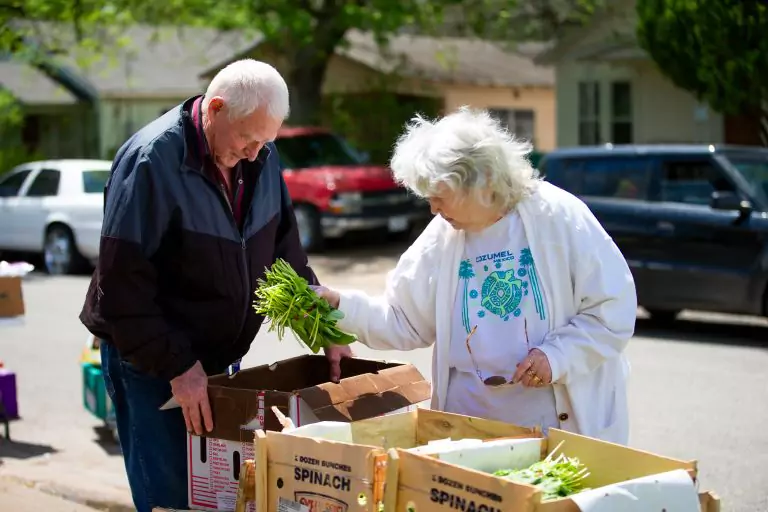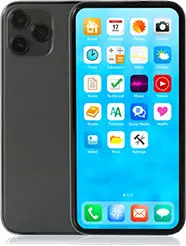If you’re facing tough financial times, food banks are here to help. They’re more than just places to get groceries—they’re vital resources for families, seniors, and individuals struggling with food insecurity. In this guide, you’ll learn exactly how the food bank works and how you can access these resources for yourself or your loved ones.
What is a Food Bank and How Can It Help You?
A food bank is a central hub where donated food is collected, sorted, and distributed to organizations like food pantries, soup kitchens, and shelters. While food banks act as storehouses, they work with local food pantries to get groceries and meals directly into your hands.
Food banks gather food from various sources:
Farmers and manufacturers.
Grocery stores and retailers.
Community food drives and donations.
These organizations aim to fight hunger, reduce food waste, and ensure no one in the community goes hungry.
Who Can Use a Food Bank?
Food banks are here for anyone facing food insecurity. If you’re choosing between paying bills or buying groceries, food banks and food pantries can help you fill your family’s plates. They provide critical resources for:
Parents struggling to provide for their kids.
Seniors living on fixed incomes.
Families or individuals dealing with unexpected crises.
You don’t need to feel alone—food banks are judgment-free spaces dedicated to helping you get back on your feet.
How Does a Food Bank Operate?
You might wonder: how does the food bank work behind the scenes? It’s a smooth process designed to serve you efficiently. Here’s how it happens:
Food Sourcing
Food banks receive donations from farms, grocery stores, manufacturers, and community food drives. They also gather surplus food that might otherwise go to waste, such as close-dated items or imperfect produce.
Storage and Sorting
Once the food arrives, it’s safely stored in large warehouses. Dedicated teams sort the donations into categories like canned goods, fresh produce, or personal care items to ensure everything is ready for distribution.
Distribution to Local Communities
Food banks partner with local food pantries, meal programs, and mobile food pantries to deliver resources directly to neighborhoods. This network ensures that food reaches families in need quickly and efficiently.
Where Can You Find Help in Your Area?
Food banks partner with local organizations to bring food closer to you. You’ll find their resources at:
Community food pantries.
Soup kitchens.
Mobile food pantry distributions.
These programs are designed to meet you where you are, whether you need emergency food assistance or long-term support.
Use Online Resources to Find Assistance
When you need immediate help, online tools make it easier to find food resources near you.
211 and FindHelp.org
These nationwide platforms connect you with local food banks, meal programs, and emergency food assistance programs. Simply type in your zip code to see what’s available nearby.
EASY Wireless Oklahoma Assistance Resource Portal
If you’re in Oklahoma, you can use the EASY Wireless Search Database Tool. This powerful resource connects you with over 600 organizations offering support, including:
Food assistance.
Housing and rental help.
Utility support, resources, and more.
The tool is user-friendly and designed to help you find exactly what you need with just a few clicks. Visit the EASY Wireless Oklahoma Resources Page to get started.

What to Expect When You Visit a Food Pantry
If you’re visiting a food pantry for the first time, it’s helpful to know what to expect.
What to Bring: Some food pantries may ask for basic identification, such as a driver’s license or proof of residency, but many don’t require anything. Bring bags or containers for transporting food.
What You’ll Receive: Food pantries provide family-sized portions of groceries, including fresh produce, canned goods, and other staples. Some may also offer personal care items or household supplies.
Food Banks Offer More Than Food
In addition to groceries, food banks often connect you with other valuable services, including:
Government Programs: Get assistance with SNAP (food stamps) or WIC.
Job Training and Financial Support: Some food banks provide workshops or connections to job resources.
Health and Wellness Support: Access programs for seniors, children, or individuals with specific health needs.
Free cell phone and data services: Through partnerships with federal Lifeline Program providers
Take the First Step Today
Food banks exist to provide you and your family with support during challenging times. By understanding how food banks work, you can access the resources you need to ease your stress and fill your pantry.
Start by visiting online tools like 211, FindHelp.org, or the EASY Wireless search tool to locate resources near you. Food banks are here to serve you—they’re just a click or a phone call away.
Food Bank Managers - Consider Partnering with Lifeline Providers to Support Your Community
If you manage a food bank or community organization in Oklahoma, you’re already making an incredible difference in the lives of families facing food insecurity. But did you know you can expand your impact by partnering with Lifeline Program providers like EASY Wireless?
Why Partner with EASY Wireless?
The Lifeline Program provides free smartphones, talk, text, and data to qualifying households. By adding this service to your offerings, you can give your community members more than just food—you’ll help them stay connected to vital resources and opportunities.
Here’s how partnering with EASY Wireless can benefit your community:
Improved Access to Resources: A free smartphone allows households to connect with healthcare providers, job opportunities, and social services.
Peace of Mind in Emergencies: Families and seniors gain a reliable way to stay in touch with loved ones or call for help in urgent situations.
Breaking Barriers to Communication: Whether it’s accessing online school portals for children or applying for jobs, having internet access can be a game-changer.
How EASY Wireless Supports Community Partners
EASY Wireless makes it easy for food banks and community organizations to integrate Lifeline services into their existing programs. We provide:
Free Smartphones: Eligible households receive a smartphone with unlimited talk, text, and data at no cost.
Seamless Setup: Our team handles the enrollment process, ensuring eligible community members can quickly access these benefits.
Tailored Support: EASY Wireless works alongside your organization to ensure the program complements your current services.
Strengthen Your Community’s Support Network
By offering Lifeline services, you give your community members the tools they need to thrive. Imagine the difference it makes when a parent can call a potential employer or when a senior can set up telehealth appointments—all from a free phone.
As a food bank or community organization, you play a vital role in creating a safety net for those in need. Adding Lifeline services helps reinforce that safety net and empowers families to build a more stable future.
How to Get Started
Interested in bringing EASY Wireless Lifeline services to your food bank or organization? Partnering with us is simple:
Contact EASY Wireless: Reach out to learn more about the program and how we can collaborate.
Set Up Enrollment Days: We can assist with setting up on-site enrollment events for your community members.
Spread the Word: Let your community know about this new service to ensure as many people as possible can benefit.
Let’s work together to ensure every household has the tools they need to succeed!

